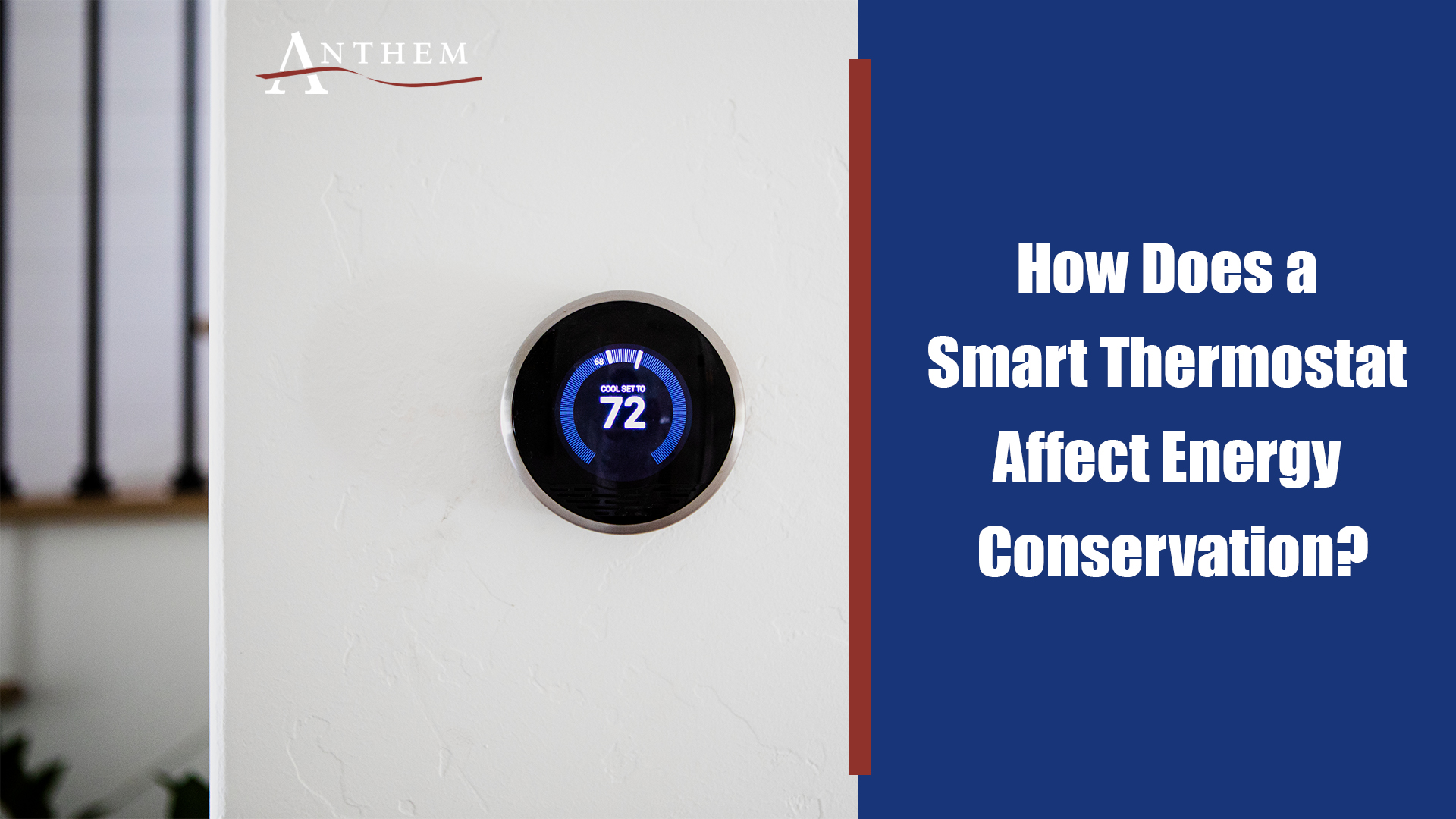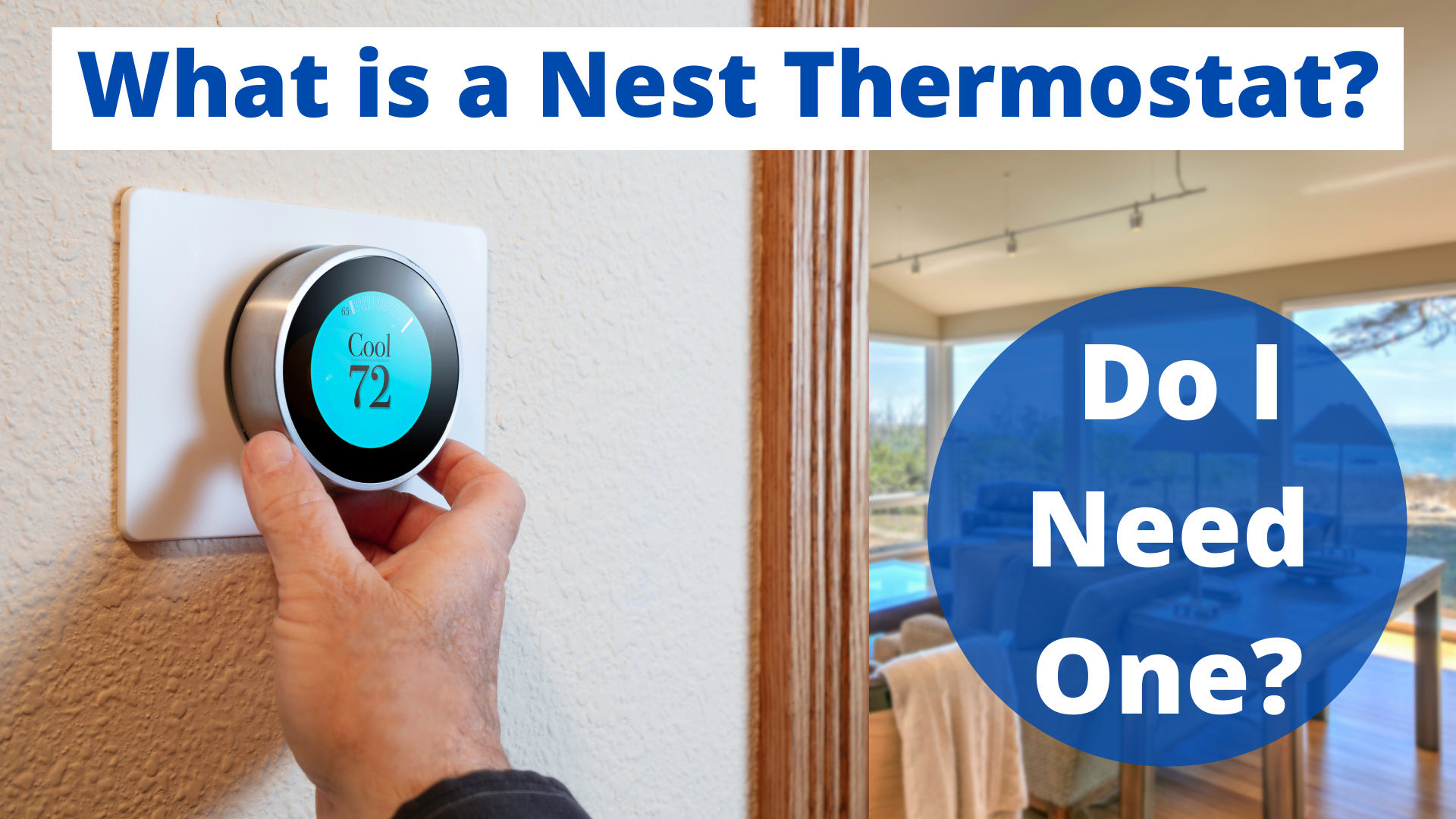Discover the benefits of smart thermostats! Enhance comfort, save on energy costs and integrate with your smart home. Learn more now!
Continue readingTips for Staying Warm During Palm Springs’ Winter Months
Winter weather can be a challenge for many homeowners in Palm Springs. With temperatures that are often below what we would consider comfortable levels, staying warm during the winter months is essential to avoid any potential discomfort and even illnesses due to extended exposure to extreme temperatures.
Fortunately, there are several things you can do as a homeowner in Palm Springs to keep your house warm throughout these colder months so that when you return from work or an afternoon out with friends, it’s not too chilly inside your abode. This blog post will provide some useful tips and advice on keeping yourself and your residence warm during the winter season – without breaking the bank.
Invest in a Quality HVAC System
As a homeowner in Palm Springs, investing in a quality HVAC system is a must. By properly heating and cooling your home with advanced HVAC technology, you can enjoy the utmost comfort even when external temperatures change drastically during the winter months.
Studies have even shown that HVAC systems with a programmable thermostat allow you to reduce overall energy consumption, making it an economical decision as well. So don’t be left out in the cold. Take control of your indoor environment while saving money in the process.

The Power of Layers
As a Palm Springs homeowner, I can definitively say that you do not want to underestimate the power of layers. Palm Springs may appear deceptively warm, but I assure you it gets surprisingly cold during the winter months. Whether you are stepping out your door or heading into town, make sure you layer up with something substantial like wool or cashmere if you want to stay warm and comfortable. This bit of advice will undoubtedly prove invaluable through the chillier seasons in Palm Springs.
Seal Out Drafts
Palm Springs homeowners need to be aware that the windy winter months can bring an unwelcome chill into their homes if they’re not prepared. Keeping your windows and doors securely shut is essential in retaining the desired temperature in your living space. A tightly sealed home will leave you feeling cozy and warm, allowing you to enjoy Palm Springs all year round without breaking a sweat. Make sure it remains that way by always double-checking your seals for holes or drafty spots.
Use a Space Heater
If you’re a Palm Springs homeowner and it’s incredibly chilly inside, look no further than the trusty space heater. These heaters are your best bet to stay warm and cozy this winter season. Just place one in whatever room you’re in, and soon you’ll feel like you’ve been transported to Palm Springs’ lovely sunnier days. All jokes aside, be sure to use your space heater safely. It will never do any good if it causes a fire instead of keeping you warm. So be sure that, while they are running, they remain attended so that your home stays safe and comfortable.

Drink Hot Beverages
Palm Springs homeowners certainly know the importance of understanding the season’s changing weather patterns, and drinking warm beverages during Palm Springs’ winter months is a great way to stay comfortable while enjoying some of the area’s best attractions. Tea it up with a piping hot cup of English tea, or power up with a steaming mug of coffee. Don’t forget to add that extra shot of espresso. Even better, indulge in a chocolatey treat to help fight off old man Winter. Not only will these delicious options keep you warm, but they’ll also give your energy level a much-needed boost.
Conclusion
Even though it doesn’t seem like there’s a big difference between the temperatures in Palm Springs during winter and summer, residents know that the cold can be unbearable without some extra warmth. By following these tips, you’ll make it through the season while barely breaking a sweat. And if you have any questions about your HVAC system or need help maintaining it, don’t hesitate to give Anthem Heating & Air Conditioning a call. We’re happy to help our customers stay comfortable all year long.
The Importance of Winterizing Your HVAC in Palm Springs
Palm Springs is an extremely desirable location for many people. With perfect weather, endless sunshine, and plenty of entertainment. It’s no wonder why so many people flock to Palm Springs every year. However, there are still a few things that come with living in the desert climate. One of those is the importance of winterizing your HVAC system. Although temperatures don’t drop to extremes in Palm Springs during the winter months, laying the groundwork beforehand can help extend the life of your unit and save you money on energy bills, in addition to providing better air quality inside your home throughout cold months. Keep reading as we explain some tips on how best you can get prepared for colder days ahead.
Change Your Filters
HVAC filters provide many benefits to the homeowner. It is important to change them regularly. HVAC filters not only act as protectors of your HVAC system, but they can also help maintain quality air within the home. Many HVAC units use filters that remove dirt, dust, pollen, and other pollutants from the air. If you don’t change these filters regularly, it can result in poor air quality, odors, and even a decrease in HVAC efficiency over time. As such, it’s essential that homeowners keep up with regular filter changes. This will ensure their HVAC unit runs at its best for years to come.

Check for Drafts
As a homeowner, it is important to make sure your HVAC system is running optimally and that there are no drafts in your home. Drafts can cause your HVAC to work harder and drive up energy costs.
To detect drafts, look for places where two different surfaces meet, such as windows and doorways. Feel with your hand if there is any cold air coming through these areas. Another way to detect drafts is to look around windows, doors, baseboards, and other areas of the house for any visible gaps or cracks. It’s also a good idea to check outside around the foundation of your house and along the siding of the house, paying particular attention to missing caulk or weather stripping. If you believe you have detected a draft in your home, then it’s important to take appropriate measures right away, as even slight drafts can add up over time and become a major issue.
Schedule Preventative Maintenance
For any homeowner, HVAC systems are essential components to keeping the air in your home both clean and comfortable. These systems require regular and ongoing preventative maintenance in order to keep them running smoothly. Scheduling HVAC preventative maintenance on a regular basis is important to ensure consistent functionality. It is also necessary to protect against future damages or malfunctions that can occur if left unchecked.
By properly scheduling HVAC preventative maintenance each year, homeowners can enjoy a healthy and consistent atmosphere while avoiding costly repairs or replacements down the road.

Install a Programmable Thermostat
A programmable thermostat is an HVAC component that can help a homeowner reduce their energy bill. While traditional thermostats require constant adjustments to regulate temperature and maintain efficiency, a programmable thermostat can complete these tasks automatically.
By setting a specific temperature range for each day of the week, a homeowner can enjoy the benefits of having consistent temperatures in their home and substantial energy savings. In addition, Wi-Fi-enabled devices give homeowners the ability to control the temperature remotely using a smartphone or tablet. The overall benefits of using a programmable thermostat make it an essential HVAC component for any savvy homeowner.
Conclusion
With these tips, you can make sure that your HVAC unit is in tip-top shape for the coming winter months. Winterizing your HVAC system in Palm Springs will help ensure that your home stays comfortable year-round while also helping to extend the life of your HVAC unit and save you energy costs in the long run. Don’t forget to schedule a professional HVAC tune-up before winter arrives so that everything runs smoothly when cold weather finally hits Palm Springs. Be prepared and stay warm this winter.
To schedule your HVAC maintenance contact Anthem today.
How Does a Smart Thermostat Affect Energy Conservation?
Did you know that heating and cooling make up a large portion of a household’s energy use? A smart thermostat comes in handy if you are keen on energy conservation. It helps you save money on your energy bill by learning your habits and adjusting temperatures accordingly. Not only that, but using one also positively impacts the environment by reducing energy waste.
So, exactly how does a smart thermostat work? And how does it help you save energy? Let’s take a closer look.
How Does a Smart Thermostat Work?
A smart thermostat is an energy-saving device that helps regulate the temperature in your home by learning your heating and cooling habits.
Your Thermostat Is… Well, Smart!
A smart thermostat uses sensors and algorithms to learn your ideal temperature and factors, like when you’re home or away. Instead of getting home and adjusting the temperature to your ideal settings, your smart thermostat knows when you will be home and adjusts the temperature for maximum efficiency. If you usually turn the heat down at night or when you leave for work in the morning, a smart thermostat remembers that and makes the adjustment for you.

You Control It Remotely!
You can also control your smart thermostat remotely via an app on your smartphone, tablet, or laptop. So, if you forget to adjust the temperature when you go for a vacation, you do not have to freak out about the electric bill! Smart thermostats are wifi enabled, allowing you to control the temperature from wherever you are.
This is especially helpful if you’ll be gone for a long time because you can ensure your home is at an energy-saving temperature the entire time.
Smart Thermostat Monitors Your Usage.
Not only does a smart thermostat learn and adjust to your habits, but it also monitors your energy usage. Smart thermostats also collect data and share it with you throughout the day. It shows you data such as:
- How much energy you are using
- Estimates your costs
This information helps you track patterns and make changes to see how it affects your energy bill. By analyzing your energy usage patterns, you may be able to make changes in your heating and cooling habits for even more energy savings.
How Can a Smart Thermostat Help Save You Money?
A smart thermostat does more than just monitor your usage and learn your daily patterns. Here’s how:
Detects Problems with Your HVAC System.
This smart device also alerts you to maintenance issues, like a broken HVAC system, so you can fix the problem before it results in even more costly energy usage. Also, repairing your HVAC unit ensures that it serves you for a longer time.
Reminds You of Routine Maintenance.
Smart thermostats can remind you of routine HVAC maintenance, like filter changes. This helps your HVAC system run more efficiently and can also save you money in the long run.
Helps Lower Energy Usage During Peak Hours.
Many energy companies have peak hours when energy costs are higher. A smart thermostat helps you avoid using too much energy during these times to prevent expensive bills. Remember, using a smart thermostat is not only good for your wallet, but it’s also good for the environment. So start saving!
Tips for Conserving Energy in Your Home:
Here are some more tips to help you conserve energy:
- Unplug appliances and electronics when not in use
- Replace lightbulbs with energy-efficient options
- Insulate your home to keep in heat during winter and cool air during summer
- Take shorter showers
- Wash clothes in cold water
- Invest in energy-efficient appliances.
By following these tips and using your smart thermostat, you will save money, conserve energy, and positively impact the environment. Also, remember to always consult with a professional for help with installation, maintenance, and troubleshooting for any smart home devices, including smart thermostats.

Where to Find More Information About Smart Thermostats
When it comes to maintenance and valuable information concerning your HVAC unit or how to conserve energy using your smart device, Anthem will help! We are professional HVAC technicians who provide excellent maintenance and repair services for your smart thermostat and HVAC unit. Contact us today to learn more about how a smart thermostat can save you money and energy.
Final Thoughts
As you can see, a smart thermostat can greatly impact energy conservation and save money on your energy bill. With its ability to learn patterns, monitor usage, and alert you to maintenance issues, it’s worth considering investing in one for your home.
By choosing an Energy Star-certified smart thermostat, you may also be eligible for utility rebates. And some utility companies offer discounted or even free smart thermostats to their customers. Happy saving!
Save Energy by Turning Off Your Air Conditioner – Does It Work?
Heating and air conditioning systems are a typical home’s most significant power users. Thus, it’s no surprise that most homeowners believe that switching off their HVAC systems will save electricity.
However, does switching off the AC when you aren’t home really save you money?
Bigthink.com used different energy models to explain heat transfer and the AC system’s performance in tackling the question of energy efficiency. The engineers found that energy efficiency depends on whether you need to remove more heat from your home by running the air conditioning system throughout the day or by removing the excess heat only at the end of the day.
Heat flows into your home when the building has less stored heat than outside temperatures. The heat accumulation continues until it reaches equilibrium. For instance, if your property only holds five units of thermal energy, that’s the heat you have to remove at the end of the day.
Also, the AC cools less effectively in extreme heat, so keeping it off during the hottest days increases overall efficiency.
Further, when the AC temporarily spikes to recover from the higher indoor temperatures, the overall energy consumption is still less than when maintaining constant temperatures.
Some researchers also agree that energy efficiency depends on different factors like:
House insulation
Home insulation provides resistance to heat flow and improves energy efficiency because of the insulating material’s resistance to conductive heat flow.
Technically, more insulation in your home increases the R-value and the resistance to heat flow. Therefore, proper insulation reduces heating and AC costs and improves overall comfort.

Size of Your Home
Heating and cooling a tiny home with sufficient insulation and energy-efficient windows costs less than heating a large house.
Size of the AC Unit
The size of your HVAC unit refers to its heating and cooling capacity. It helps if you hire an experienced HVAC technician to help size the HVAC unit correctly. An oversized or under-sized HVAC unit will not function efficiently, resulting in higher utility bills.
Systems Energy Efficiency Rating
HVAC units’ energy efficiency rating affects the overall heating and cooling costs. You should engage a heating and cooling technician to help you choose systems high on energy efficiency so you do not end up paying exorbitant energy bills.
Outdoor Temperature and Humidity
Typically, air conditioning units should be able to remove moisture from the air. When humidity levels are high, the cooling effect is low. Thus, you must keep the air conditioning system running, which means you pay more.
Modern vs. Older System
Some households are still using outdated HVAC equipment that operates less efficiently. These homes end up paying higher energy bills, which hurts their savings capacity.
Newer, more energy-efficient HVAC equipment features huge energy-saving components which help homeowners achieve huge savings potential even when running all day long,

Is Continuously Running the AC Bad?
Another consideration is the safety of your equipment. Some homeowners have argued that running the AC continuously lowers its lifespan. While their argument is technically valid, running the AC for a couple of hours to cool down your home in the evening will not strain the AC or cause the compressor to blow off.
Besides, some modern ACs are stable and can run at full speed for several hours. Thus, running the AC for a couple of hours prevents short cycling, which could be problematic.
Install a Programmable Thermostat to Improve Energy Efficiency
Programmable thermostats help to lower energy bills. According to energy.gov, you can save as much as 10% a year on heating and cooling by simply installing an efficient thermostat.
Therefore, when shopping for thermostats, check their compatibility with the system’s equipment and choose one with the appropriate scheduling options.
In addition, ensure the installation spot is on an interior wall away from heat/draft sources like ventilations, doorways, and windows.
Engage a qualified HVAC expert near you to help you choose the right programmable thermostat and to ensure proper installation.
Conclusion
Since air conditioners use more energy when they cycle all day, it is cheaper to let your system operate at total capacity when you are home.
However, it is also worth noting that several factors contribute to how efficient your system is regarding energy-saving abilities.
Make plans to have a professional heating and cooling technician inspect your HVAC systems. If you are unsure how to lower the heating and cooling energy bills, Anthem is here to help you. We specialize in repairing, installing, and maintaining plumbing, heating, air conditioning, and air quality services.
Contact Anthem CV today.
How Can Setting My Thermostat Help Save Money
One of the driving points for investing in a thermostat is its ability to make use of automatic adjustments to your AC and save on your electrical bill.
Typically, you can save on your house heating and cooling bills by simply resetting your thermostat when you are away or overnight.
How much you can save is up for debate.
In this post, we dig into how setting your thermostat could help you save money. If you have been wondering what’s the most economical setting for a thermostat, we have the answer.

How Much Can You Save by Adjusting Your Thermostat?
According to Energy.gov, you can save up to 10% annually on heating and cooling by switching your thermostat back 7°-10°F for eight hours a day from its standard setting.
Most thermostats have ON and AUTO settings that control the blower fan in your indoor AC unit. These settings significantly impact the temperature and humidity levels in your home.
When you set the thermostat to ON, the fan runs constantly. That means the fan is still running even when the AC is not cooling your home. If the thermostat is set to AUTO, the fan only runs when the AC is cooling the indoor air.
Turning the thermostat ON during summer will not cool your office or home much faster. Instead, the fan will just be circulating warm air around the room.
When the fan is running nonstop, it consumes more energy, directly affecting your utility bills.
Set the thermostat to AUTO, forcing the fan to shut off between cooling cycles. Therefore, the AUTO setting is more energy-efficient.
Do not turn off the AC when leaving your home or at night. Instead, set the thermostat to a desirable temperature. Typically, the smaller the difference between the indoor and outdoor temperatures, the lower the overall cooling bill.
To save on the heating bill, set the thermostat to about 68° F while you are awake and set it lower while you are asleep or away from home. In summer, keep the house warmer than usual when you are out and set the thermostat higher. When you return, the AC does not have to work hard to regulate the temperature.
Is It Cheaper to Leave Your Thermostat at One Temperature?
Yes!
Ideally, the AC’s startup process consumes more energy, which means your energy bill is higher than when you leave the AC running the entire time at one set temperature.
To maximize efficiency, always keep the AC at the same consistent temperature on a seasonal basis.
If you have a programmable thermostat, you should set it. When used appropriately, the programmable thermostat could cut as much as 30% off your energy consumption, resulting in lower utility bills. If you use a programmable thermostat, you can schedule it to adjust during evenings and while away from home.

Tips for Lowering Heating and Cooling Utility Bills
Are you still struggling to keep the utility bills to the lowest possible? Here are additional tips to help you regulate temperatures while keeping your house comfortable.
Keep your home warmer by:
- Insulating the attic and crawl spaces: heat rises and escapes through the attic and crawl spaces
- Use quality insulation throughout the home
- Upgrade to energy-efficient windows
- Keep the windows closed
Keep the house cooler by:
- Closing the curtains during the day and installing or using shutters on your windows
- Avoid running appliances that produce heat during the day
- Replace the air conditioner filters with new filters regularly
Generally, the HVAC units become more energy efficient with proper maintenance. Therefore, get an HVAC technician to inspect your HVAC systems at least once a year.
Conclusion
Saving on utility bills is integral to every home or business’s financial goals. The heating and cooling system is one way you can save money on your utility bills. To start, ensure you set your AC thermostat appropriately.
In winter, set the temperatures lower than average, and in summer, set the temperatures higher. Please do not switch off the AC unit because it consumes more power when you start it up and throughout the process of regulating the temperatures.
Instead, set the temperatures to a constant. Finally, regular HVAC maintenance helps achieve more HVAC efficiency.
At Anthem, we focus on improving your home’s overall efficiency and saving you money. We have reliable techs and over 20 years of combined HVAC experience. Our HVAC pricing is among the most competitive in the market.
Call us today, and let us help you with managing your HVAC system’s energy consumption.
If you live around the Coachella Valley area – Indio, Indian Wells, Palm Desert, or La Quinta – a reputable heating and air conditioning repair and provider company is nearby. Let Anthem Heating & Air help you with all your air conditioning and heating questions and needs! Visit us at www.anthemcv.com/ or call now at (760) 895-2621.
What Is a Nest Thermostat? Do I Need One?
Summary
If you want a smart home, you are not alone. Home automation with a smart thermostat enhances the luxury of your dwelling and makes it more pleasing to live in. There are different options for such thermostats, with Nest Thermostat topping the list. It helps save energy and money while enhancing comforts. This article discusses everything you need to know about the Nest Thermostat.
Introduction
In today’s homes, smart technology is redefining how we live. Most people are already accustomed to using touch screens and voice control on their gadgets, including ACs and heaters.
If you can’t control your HVAC automatically, or you have to adjust your room temperature manually anytime you want a temperature change, you are underutilizing smart tech.
Today, the Nest Thermostat is revolutionizing how air conditioning and heating systems work in our homes.
Imagine being in a deep sleep, and the temperature changes without the thermostat automatically adjusting the temperature. You will get sweaty or shivering until you manually adjust it.
The Nest Thermostat takes the lead when it comes to equipment that auto-adjusts and makes life more comfortable.
Let’s learn more about these Nest Labs products!

What Is a Nest Thermostat?
The Nest Thermostat is a home automation device produced by Nest Labs, a division of Google. It is a self-learning smart technology that enhances home cooling and heating.
Nest Thermostat is a beautifully designed device to add color and glamour to the home. This electronic tool is programmable using Wi-Fi to communicate with the HVAC system to enhance cooling and heating while saving energy and money.
Types of Nest Thermostats
There are two types of Nest Thermostats – the Nest Thermostat E and the Nest Learning Thermostat.
Both devices are similar but with certain technical differences, regarded as 2nd and 3rd generation smart technology.
- Nest Thermostat E shares similar features as its sibling without an extensive learning function. The E works only with 85% of 24volts heating and cooling equipment without the Nest Farsight functionality.
- Nest Learning Thermostat is a 3rd Gen smart technology that works with nearly all types of HVACs. Its display is easily readable and provides Farsight functions that display bigger text and bright colors.
Both smart thermostats work similarly, except that Nest Learning Thermostat can also control hot water and heating. And they differ in price!
How Do Nest Thermostats Work?
They connect with the home’s HVAC installation for smart automation functionality.
Once installed, the device gradually learns your home behavior for heating and cooling and automatically repeats these routine activities to enhance your HVAC functions.
Differences Between Nest Thermostat and Nest Learning Thermostat
Though there are similarities, a few differences stand them apart. Some of the differences are in design, features, compatibility, and price.
Hardware and Software of Nest Thermostat
The Nest Thermostat combines software and hardware functions suited for standard HVACs.
- Hardware. This includes the main PCB, rotating ring, the base houses, holes and bubble level, and the connection terminals.
- Software. The software part works with the Operating System (OS) of the communicating device that allows it to communicate by spinning and clicking the control wheel. This part makes the device internet-ready when linked via wi-fi.
Why Nest Thermostat?
Considering our tight schedules, conserving time and money through home automation is essential. The benefit of a Nest Thermostat is that it learns your routine and adjustings your home heating and cooling without your intervention.
While standard thermostats offer basic functionality, they are somewhat hard to use. And having to adjust the temperature manually poses additional tasks and distractions to the user.
Therefore, you need a Nest Thermostat for convenience and relief from tinkering with your thermostat now and then.
Features of Nest Thermostat
Nest Thermostat is a good choice for home automation, as seen from its features.
- Excellent Design. Nest Thermostat combines automation functionality with elegance. The beautiful design makes Nest the favorite of smart home enthusiasts.
- Vibrant Color. Its 229-pixel, full-color display makes Nest stand out in your home.
- Easy Control. The super-easy control of the metal ring to adjust temperature is unique.
- Voice Assistants. The voice assistant, combined with Alexa and Google Home, offers the easiest way to communicate with your equipment and extend its functionality without limits.
- Save Money. Nest is the preferable option because it saves energy and money.
- Geo-fencing. This functionality lets Nest know when you aren’t at home and accordingly controls your equipment.
- Wide Compatibility. Nest is compatible and works with most smart devices, including Google Assistant, Alexa, IFTTT, Philips Hue bulb, etc.
- Habit Learning. It can learn your daily heating and cooling routine and repeat it automatically.
Some Benefits of Nest Thermostat
- Remote Control. It allows you to control your equipment from your smartphone.
- Energy Saving. The ability to control your equipment remotely helps Nest automatically activate Eco mode to conserve energy when you are away from home.
- Automatic Light. You don’t need to struggle turning on the light. It automatically lights up upon entering the room.
- Energy Report. It records your energy use and sends reports as required.
Do You Need It?
With air conditioning and heat gulping 46% of your home energy use, having a system that guarantees a reduction in energy consumption and saves money is crucial. This is where Nest Thermostat comes into the picture.
However, before going for Nest, you need to be sure it’s for you by satisfying the following conditions.
- Compatibility. You need to check that the device will work with your HVAC system. Google estimates Nest Learning is compatible with about 95% of HVACs while about 85% with Nest Thermostats.
- Affordability. Determine if you can afford it. The Nest Thermostat costs $129.99, while Nest Learning Thermostat costs $199.99 on Amazon.
- Cost of Accessories. Will you need additional accessories? This will require other expenses, estimated at around $40 apiece. Find out how much and if you can afford it.
- Cost of installing. After buying the device and accessories, how much will it cost to install if you aren’t installing it yourself?
Choosing the right Nest Thermostat
Before buying Nest Thermostat, you need to answer the following questions:
- Do your home temperature requirements vary by room?
- Is your home a one or two stories or a very large dwelling?
- Do you need automatic adjustment or behavior learning functionality?
- Are you interested in a frosted display unit?
- Is HVAC capability a concern for you?
If you answered yes, the Nest Learning Thermostat is for you. Otherwise, the Nest Thermostat is fine.

Installing a Nest Thermostat
You can install Nest yourself if you are a DIY geek, or you can have a professional HVAC technician do it. Either way, you will have your device installed and working in about 30 minutes.
Do You Need Help with a Nest Thermostat for Your Home?
Smart Thermostats are for customers who want to enjoy the benefits of home automation.
If you want to save money on energy consumption while enjoying the enhanced comfort of cooling and heating without lifting a finger, Nest Thermostat is for you.
If you live in Inland Empire or Coachella Valley and want to enhance the performance of your HVAC, let Anthem help you with a more budget-friendly Nest Thermostat option.
Anthem’s goal is helping to make it as easy as possible for you to acquire the systems and make your home more comfortable and energy-efficient.
Contact Anthem now to extend the functionality of your cooling and heating equipment to absolutely budget-friendly!








